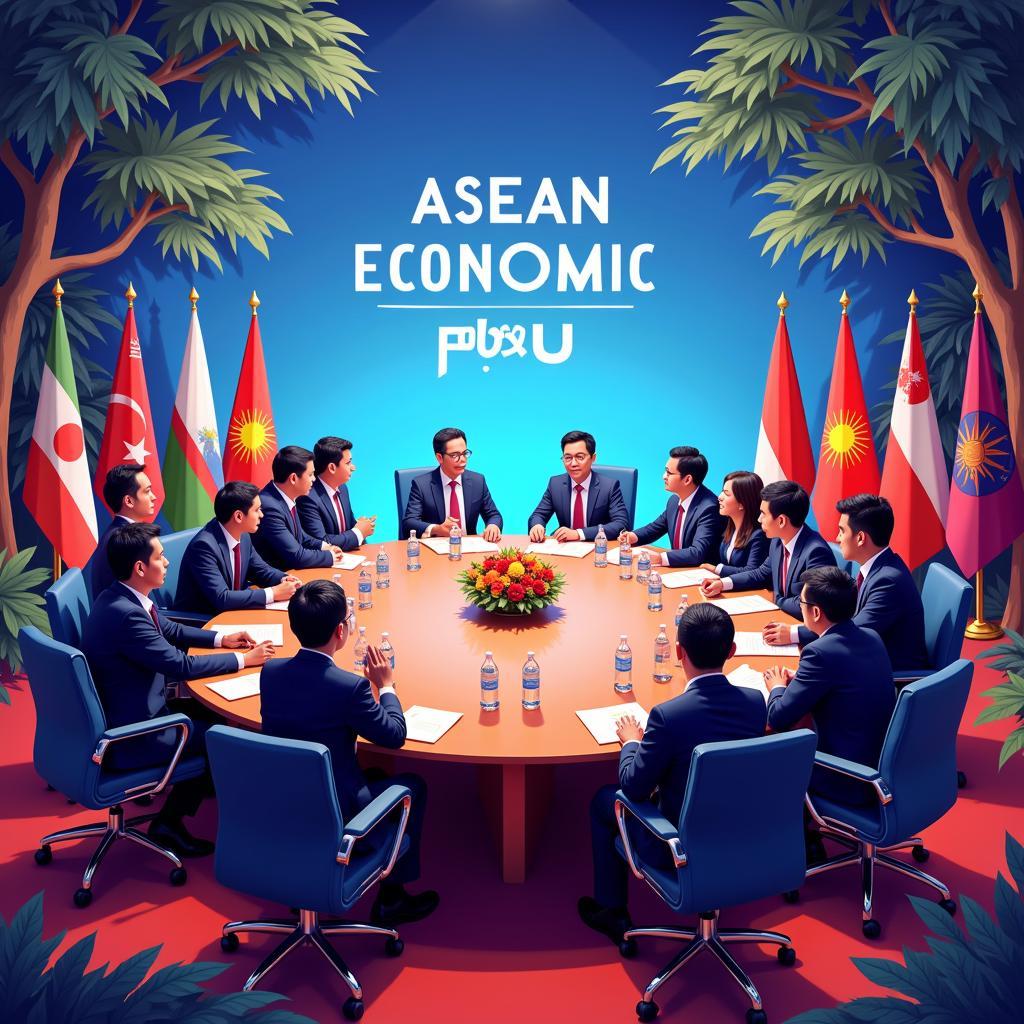The Association of Southeast Asian Nations (ASEAN) stands as a testament to the power of regionalism in Southeast Asia. Founded in 1967, ASEAN has fostered economic growth, political cooperation, and socio-cultural exchange among its ten member states: Brunei, Cambodia, Indonesia, Laos, Malaysia, Myanmar, the Philippines, Singapore, Thailand, and Vietnam. This article delves into the multifaceted relationship between ASEAN and regionalism, exploring its evolution, achievements, challenges, and future prospects.
The Genesis of ASEAN and Its Guiding Principles
ASEAN’s formation was a direct response to the geopolitical realities of Southeast Asia in the mid-20th century. The Cold War cast a long shadow over the region, with newly independent nations grappling with internal strife and external pressures. A shared desire for peace, stability, and prosperity led the founding fathers of ASEAN to embark on a journey of regional integration.
At the heart of ASEAN’s approach lay the principle of “ASEAN centrality.” This concept underscores the organization’s role as the primary driving force for regional cooperation and integration in Southeast Asia. Decisions and initiatives concerning Southeast Asia should emanate from within the region, respecting the interests and perspectives of ASEAN member states.
The ASEAN 2017 Six Thematic Priorities exemplify the organization’s commitment to addressing key challenges and seizing opportunities. These priorities, encompassing peace and security, economic growth, social progress, environmental protection, cultural identity, and institutional strengthening, highlight the breadth and depth of ASEAN’s regional agenda.
Economic Integration: The Cornerstone of ASEAN Regionalism
Economic cooperation has been a cornerstone of ASEAN’s regionalist agenda from the outset. The establishment of the ASEAN Free Trade Area (AFTA) in 1992 marked a pivotal step towards creating a single market and production base. AFTA has facilitated the free flow of goods, services, and investments within ASEAN, contributing significantly to the region’s economic dynamism.
The ASEAN Economic Community (AEC), established in 2015, represents a more ambitious vision for economic integration. The AEC aims to create a highly competitive and integrated single market and production base, characterized by free movement of goods, services, investment, skilled labor, and capital.
 ASEAN Economic Forum
ASEAN Economic Forum
Political and Security Cooperation: Navigating Complexities
While economic integration has progressed steadily, political and security cooperation within ASEAN has often been more nuanced. The principle of non-interference in the internal affairs of member states has, at times, posed challenges to addressing sensitive political and security issues collectively.
Despite these sensitivities, ASEAN has made strides in fostering dialogue and cooperation on transnational challenges such as terrorism, maritime security, and cybersecurity. The ASEAN Regional Forum (ARF), established in 1994, provides a platform for dialogue on security issues involving ASEAN member states and their external partners.
Socio-Cultural Cooperation: Fostering a Shared ASEAN Identity
Beyond economic and political spheres, ASEAN has recognized the importance of nurturing a shared ASEAN identity based on mutual understanding, respect, and appreciation for the region’s rich cultural diversity. Initiatives in education, culture, and sports have aimed to bridge cultural divides and foster a sense of community among the peoples of ASEAN.
The ASEAN Socio-Cultural Community (ASCC) seeks to enhance regional cooperation in areas such as education, health, social welfare, and cultural exchange. The ASCC aims to improve the quality of life for ASEAN citizens and to promote a more resilient and inclusive ASEAN community.
Challenges and Opportunities: ASEAN Regionalism at a Crossroads
ASEAN regionalism faces a myriad of challenges and opportunities in a rapidly evolving global landscape. The rise of geopolitical rivalry, economic uncertainties, and non-traditional security threats such as pandemics and climate change necessitate a more robust and proactive ASEAN response.
Narrowing the development gap between member states remains a key challenge. Disparities in economic development and levels of integration within ASEAN could hinder the organization’s ability to achieve its full potential.
“ASEAN’s success hinges on its ability to bridge the development gap between its member states,” notes Dr. Nguyen Minh Tuan, an expert on Southeast Asian economics. “Investing in infrastructure, education, and technology in less developed member states is crucial for fostering inclusive and sustainable growth across the region.”
 ASEAN Summit Meeting
ASEAN Summit Meeting
Looking Ahead: Strengthening ASEAN Regionalism in a Changing World
To navigate these challenges and harness emerging opportunities, ASEAN needs to deepen integration, enhance institutional effectiveness, and strengthen its external partnerships. Continued emphasis on ASEAN centrality will be crucial in navigating the complex geopolitical landscape of the 21st century.
Further strengthening people-to-people connections within ASEAN is paramount. Initiatives that promote cultural exchange, educational collaboration, and youth engagement will foster a stronger sense of shared identity and purpose among the people of ASEAN.
The future of Asean And Regionalism In Southeast Asia is inextricably linked. By embracing the principles of unity in diversity, consultation, and consensus, ASEAN can continue to serve as a beacon of hope and progress for the region and beyond.
FAQs
What is ASEAN’s role in regional security?
ASEAN plays a crucial role in maintaining regional peace and stability through dialogue, cooperation, and confidence-building measures among member states. While not a military alliance, ASEAN promotes preventive diplomacy and addresses common security challenges through platforms like the ARF.
How does ASEAN promote economic integration?
ASEAN promotes economic integration by reducing trade barriers, harmonizing standards, and facilitating the free flow of goods, services, and investments among member states. The AEC blueprint outlines key initiatives to create a single market and production base.
What are the main challenges facing ASEAN?
ASEAN faces challenges such as narrowing the development gap between member states, managing territorial disputes, responding effectively to non-traditional security threats, and maintaining its centrality amidst shifting geopolitical dynamics.
How can I stay updated on ASEAN news and developments?
You can stay informed about ASEAN through reputable news sources, official ASEAN websites, and academic publications focusing on Southeast Asian affairs.
Need Help? Contact Us!
For assistance with ASEAN-related matters, please reach out to us:
Phone: 0369020373
Email: aseanmediadirectory@gmail.com
Address: Thon Ngoc Lien, Hiep Hoa, Bac Giang, Vietnam
Our dedicated team is available 24/7 to provide support.
